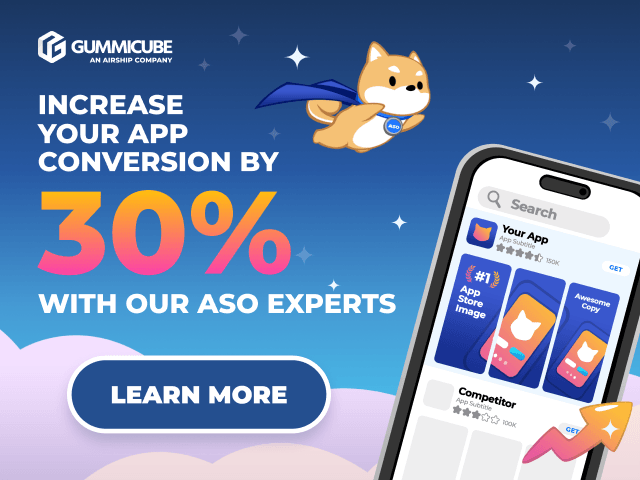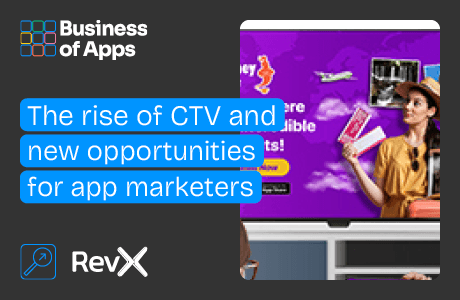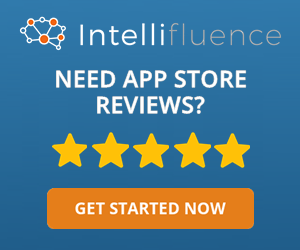Nearly 9 out of 10 US households own a Smart TV, allowing access to a wide variety of streaming content and services. Not surprisingly, Connected TV (CTV) advertising is gaining remarkable momentum and is projected to reach $33.35 billion in 2025 in the US alone.
Linear TV advertising was a one-way street that offered limited targeting capabilities and lacked direct attribution metrics. With the advent of CTV and over-the-top (OTT) streaming services such as Netflix, Disney+, Hulu, and more, the game has changed. While linear TV primarily served as a tool for branding, CTV advertising offers an opportunity to achieve measurable outcomes, a feature that now has a common currency in the world of performance marketing.
The shift, however, raises an important question: Are app marketers fully harnessing CTV’s potential to drive results beyond the staple performance marketing metrics such as click-through rates and impressions?
CTV advertising combines the storytelling power of television with the precision and interactivity of digital advertising, bridging the gap between brand-building and performance, and transforming how mobile apps approach user acquisition, engagement, and retention.
In this blog post, we will explore how CTV advertising lends itself to new possibilities for mobile app marketers to tap into its dynamic advertising ecosystem for better ROI. Also, check out the first in the CTV series here, where we discuss the fundamentals and ascent of Connected TV advertising.
From viewing to doing: The rise of interactive ad-spaces in CTV
One of the most exciting developments in CTV advertising is the emergence of interactive ad spaces. These ads not only capture attention but also encourage direct user interaction. Interactive CTV campaigns have demonstrated significantly higher engagement rates than desktop video. Let us look at some of the most effective interactive ad formats:
Shoppable ads
Shoppable ads enable viewers to purchase products directly within the advertisement. This format eliminates friction in the buying process and makes purchases effortless. A notable example is the partnership between Walmart and Roku in 2022. Their collaboration introduced shoppable commerce on CTV, allowing users to select products with their remote controls and complete purchases directly through the ad interface. This innovation seamlessly combines convenience and interactivity in advertising.
Pause screen ads
Pause screen ads take advantage of natural breaks in viewing. When viewers pause a video, static ads appear on the screen, offering a non-intrusive way to engage the audience. Streaming services have effectively used this format to promote brands through unobtrusive yet memorable ad experiences.
Interactive overlays
Interactive overlays add clickable elements on top of video content, enhancing engagement without interrupting the viewing experience. These overlays can prompt actions such as starting a purchase or signing up for a service. For example, Panera Bread’s CTV ad features a “Start an order” call-to-action (CTA) overlay, allowing viewers to order food directly from the ad. This format is particularly effective for driving direct engagement and conversions.
Picture-in-picture (PiP) ads
PiP ads allow viewers to continue watching their primary content while interacting with an ad in a smaller window. The dual-focus approach ensures that the viewing experience remains uninterrupted while still engaging the audience with the ad content. PiP ads are especially effective for tasks such as exploring–or teasing–product details or signing up for promotions. This format offers a balanced blend of interaction and user convenience.
QR codes
The use case of QR codes are now easily recognized by many demographics; viewers can simply scan the code with their devices and access additional content or make in-app purchases (IAPs). For example, during the 2022 Super Bowl, Coinbase aired a CTV ad featuring a bouncing QR code mimicking the DVD logo of yore.
This novel and nostalgic approach resulted in a significant surge in app downloads, website traffic, and mentions in media outlets.A report by LG Ad Solutions found that 66% of Connected TV (CTV) users recall seeing an ad with a QR code, and 70% of these users appreciate such ads. Furthermore, 62% of CTV users are inclined to scan QR codes when exposed to them.
With interactive ads, advertisers are reimagining how their brands engage with audiences. As immersive, action-oriented experiences, these ads break the traditional passive viewing model and invite users to participate directly.
Using the above tactics, advertisers can create interactive touchpoints that drive install rate (IR), conversion rate (CR), and more. CTV advertising is becoming a powerful tool for brands looking to build deeper relationships with their audiences in a way that feels natural and compelling.
Cross-device functionalities: Bridging the mobile and CTV ecosystem
When Spotify introduced its cross-device functionality, it redefined how advertisers could engage with users across platforms. The audio streaming and media service targeted users who listened to its content on their smartphones and then complemented the campaign with a bundle that offered intentional placement on their household Connected TV. The device convergence increased ad recall and also drove app installs and subscriptions.
Cross-device functionalities allow marketers to bridge the gap between CTV and mobile, enhancing wider demographic, behavioral, and geographical reach. Advertisers can use data-driven insights to target users across their mobile devices, and CTVs at the household level. This cohesive strategy ensures consistent messaging and reinforces brand recall.
Furthermore, second-screen engagement allows viewers to interact with CTV ads via their smartphones or tablets. About 65% of people who use a second screen while streaming have looked up information on a product that’s been advertised in a TV show. This behavior highlights the natural synergy between CTV and mobile, where viewers are already inclined to engage with content across devices.
For example, a viewer watching a shoppable CTV ad can complete the purchase on their mobile device. This integration reduces friction in the customer journey and enhances conversion rates (CVR).
Finally, with data from CTV and mobile, advertisers can gain a clearer picture of campaign performance. Multi-device attribution helps marketers understand the role of each touchpoint in driving conversions, enabling more effective optimization. With cross-device functionalities, advertisers can enhance the connection between CTV and mobile. OTT advertising can take this even further for mobile app marketers.
What is the OTT opportunity for mobile app marketers all about?
Today, streaming services dominate entertainment. There is no denying that. According to Nielsen, streaming accounts for 40% of total TV time in the US. With OTT ad spend via mobile apps in the US reaching nearly $16 billion in 2024, showing a growth metric of 10% year-over-year, it’s clear that advertisers recognize the value of these platforms.
OTT platforms thus, are treasure troves of first-party data and creative ad opportunities, enabling marketers to target users based on demographics, interests, and viewing habits. This precision targeting ensures personalization and enhances ad relevancy.
Beyond targeting, OTT advertising offers a variety of high-quality creative formats. From skippable video ads to immersive experiences, these platforms provide a versatile canvas for app marketers to experiment with and optimize their campaigns.
What’s more, OTT advertising excels at re-engagement. Consider a lapsed user of an app. A well-timed OTT ad featuring a QR code that links to an exclusive offer or a new feature update can reignite interest and encourage re-installs. Gaming apps can showcase in-game rewards or upcoming multi-player tournaments, while E-commerce apps might feature flash sales or seasonal discounts.
To increase the Return on Ad Spend (ROAS), mobile app marketers should embrace programmatic buying to access premium OTT inventory, ensuring efficient ad spend and high-quality placements. Coupled with advanced analytics and a willingness to experiment with interactivity, OTT advertising offers a stellar opportunity for app marketers to drive non-organic installs.
Tech trends in CTV advertising: What’s next?
As technology evolves, a wave of innovation blending tech with creativity could catapult user engagement for app marketers. Imagine pausing your favorite show and effortlessly exploring how a new sofa might look in your living room through augmented reality (AR) ads, making purchases feel intuitive and exciting.
Or, consider the simplicity of voice-activated ads, where a viewer can say, “Order now,” and instantly order a product hands-free. AR and voice-activated ads are just a couple of the groundbreaking trends shaping CTV advertising. These trends are creating new possibilities for mobile app marketers to captivate audiences in ways that resonate deeply, delight, and drive tangible results.
Conclusion
With the rise of streaming services, internet-connected devices, and gaming consoles, among others, CTV advertising is shaking up the way mobile app marketers reach their audiences. Not only do these platforms open up a world of innovative, interactive opportunities, but they also provide highly precise targeting that was previously unimaginable in the traditional TV space.
With the ability to tap into the power of first-party data, cross-device functionality, and creative ad formats, mobile app marketers can now engage users in ways that are personalized, effective, and measurable. The future of mobile app advertising lies in the integration of TV and mobile experiences, and the time to embrace it is now.
Looking to harness the full potential of CTV advertising for your mobile app or brand? Work with a programmatic DSP such as RevX that can scale your app through effective retargeting and user acquisition campaigns, offering high-touch management services powered by machine learning-driven automatic bidding and optimizations.
Reach out to our team of CTV advertising experts today and start driving results that truly matter.












